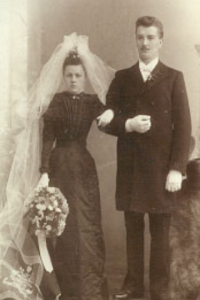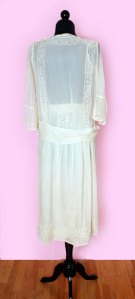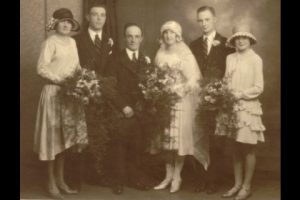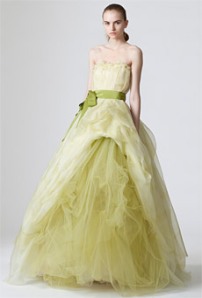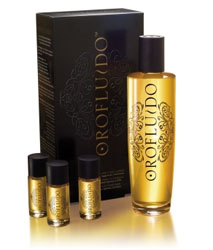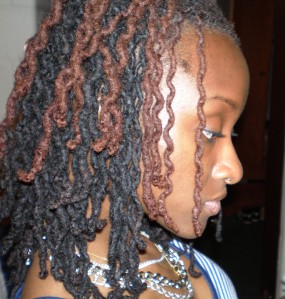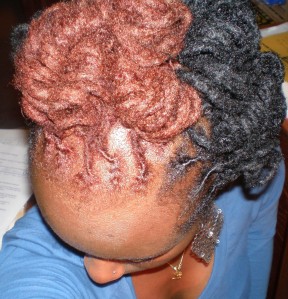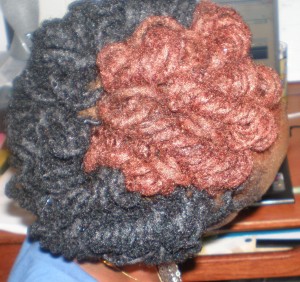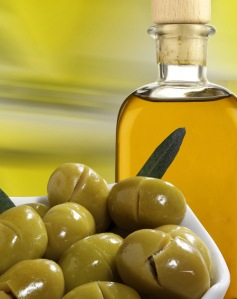8 Surprising Uses for Olive Oil
Olive oil has many valuable uses beyond cooking, from personal care to home improvement, natural remedies and beyond.
By Brian Clark Howard
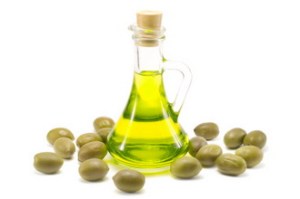
Olive Oil
Olive oil is more than a cartoon character, historic symbol of peace and glory or food staple of the much-vaunted Mediterranean diet. It is actually tremendously useful stuff, finding applications in personal care, home improvement, green cleaning, natural remedies and other areas.
It’s long been reported that there are a number of health benefits of olive oil. As a foodstuff it has a high concentration of monounsaturated fatty acids, which studies show promote “good” cholesterol (HDL) while lowering “bad” cholesterol (LDL). Olive oil is also known to be gentle on the digestive system, and even may help prevent gallstones and soothe ulcers. Good quality olive oil contains valuable vitamins and nutrients, and it is loaded with antioxidants, which many believe help protect the body from cancer.
These days there are an increasing array of organic and boutique olive oils offered for sale, some of them quite pricey. In general, the less processed an oil the more nutrients it contains, although the more expensive it tends to be. “Extra virgin” olive oil comes from the first pressing of olives, and retains the most flavor and aroma. Most better brands are also advertised as “cold pressed,” meaning they aren’t heated up beyond room temperature during processing. Unsurprisingly, high heat can damage the flavor and nutrients in the oil. “Virgin” olive oil generally comes from the second pressing. Cheaper brands sold as “regular” or “pure” olive oil are made with chemical refining and filtering, which standardize and neutralize flavors and acid contents. They have lower nutrient levels as a result.
To help protect the fragile environments of the Mediterranean and elsewhere, it’s a good idea to buy organic olive oil when you can. It also will tend to be of high quality and flavor, great for spaghetti, oven-roasted vegetables, fresh salads and many other dishes.
It’s true that you won’t be consuming the olive oil in a number of the uses below, and part of the point of this post is to help you save money by suggesting alternative uses to things you already have, so you don’t have to make a trip to the store and buy some additional products to get the job done. Therefore, we’d understand if you preferred to use the cheapest, lowest-grade oils for some of these tips. You probably aren’t going to crack open that vintage bottle of herb-infused oil your aunt brought you back from Tuscany in the event that you have a squeaky door. But since readers seemed to find everyday alternative uses for vodka, vinegar and ketchup useful, we thought we’d look into olive oil:
1. Get Healthy Skin (And Fight Cancer!)
People have used olive oil for centuries for personal care. It is a great skin moisturizer, in part because it contains linoleic acid, a compound not made by the body, but which prevents water from evaporating. According to Leslie Baumann, M.D., author of The Skin Type Solution, consuming olives and olive oil can promote healthy skin, as can applying it directly as a moisturizer. You can also add a bit of olive oil to a warm bath for a good healthy soak.
Some of the most exciting news, according to Baumann, is that olive oil also contains at least four different antioxidants, which can help “neutralize damaging free radicals that can lead to skin aging and skin cancer.” Baumann writes that in studies mice that drank extra virgin olive oil developed less skin cancer after exposure to UV light.
Olive oil can also provide a safe and natural lubricant for a close shave. As a soothing aftershave, rub in an extra teaspoon of the stuff after rinsing off. In fact, some products from The Art of Shaving are based on olive oil. Similarly, olive oil can soothe chapped lips. Make your own balm by mixing olive oil and melted beeswax in a 1:1 ratio (add an essential oil if you want a nice fragrance). According to the handy new Website AltUse, you can moisturize your cuticles by soaking in olive oil mixed with water, or apply olive oil directly to cuticles before applying polish or buffing nails.
2. Tame Tangled and Damaged Hair
Olive oil also has benefits for hair. Comb a bit of the stuff through dry or frizzy hair to help tame and moisturize your locks, especially in winter or on humid days. Olive oil can also provide some relief for damaged hair.
In his new book Clean Body, Zen Cleaner Michael de Jong suggests treating your tresses by kneading a few tablespoons of olive oil into your scalp and hair. “Swathe your oiled-up curls with a shower cap and take a thirty minute breather…snooze, toss back a latté, whatever. Then just shampoo as usual to reveal a refurbished mane that even Fabio would envy,” he writes.
3. Care for Your Cat
Just as Frank and Millie can benefit from grooming with olive oil, so can Fluffy and Mittens. According to curbly.com, add a teaspoon of olive oil to your cat’s food to help prevent hairballs, as well as promote a shiny, healthy coat. Olive oil is likely to be more gentle on a cat’s system than petroleum-based anti-hairball lubricants. Plus, it has the benefit of coming from a renewable resource, as opposed to oil from the ground.
4. Ease Snoring
Kitties aren’t the only ones who can take advantage of natural lubricating properties of olive oil (yes it can be used as a “personal lubricant,” in case you were wondering). And according to AltUse, taking a sip of olive oil before heading to bed can help lubricate your throat muscles, cutting down on snoring. We won’t tell if you drizzle some extra olive oil on Grandma’s salad the next time she comes to visit!
Others have noted that downing a teaspoon of olive oil can help soothe a scratchy or ticklish throat.
5. Polish Furniture and Metal (and Condition Leather)
Silverware, copper and other metal items can be polished with ketchup or toothpaste. After you’re done rub a bit of olive oil on to prevent streaks, corrosion and tarnish. According to Michael de Jong, to polish your desk, use two parts olive oil mixed with one part lemon juice.
Pour just a few drops on a soft cloth, wipe away the dust, scuffs and fingerprints, and make your desk shine. In fact this technique works well for a range of wooden furniture and objects. You can also condition and revitalize leather goods, such as baseball mitts, by rubbing in olive oil. Let set for 30 minutes, then wipe away any excess.
6. Free Stuck Zippers
There are few things more annoying than stuck zippers (remember that episode of Seinfeld when George visits his therapist?). So if you are vexed by this particular problem, break out the olive oil. Swab some of the stuff on the teeth of the zipper, then try gently easing it unstuck. Good luck!
7. Fix Squeaky Doors
Olive oil can actually be used as a lubricant in many applications. It’s safe to keep around the house, so you don’t have to worry about children or pets getting into it. Try it out on squeaky doors, hinges and anywhere else you might consider using WD-40 or another lubricant. While WD-40 may work well, it’s also based on hydrocarbons, so anytime we can use less of those we’re taking a step toward a cleaner world.
8. Cure an Earache
A number of folks swear by olive oil as a natural remedy for earaches. One suggestion is to “very carefully use a cotton swab to apply olive oil to the outside ear cavity to help with earaches and excess wax.” Another user suggests: heat up some olive oil in a microwave for 30 seconds then apply it to the ear that hurts for relief.
Read more: http://www.thedailygreen.com/green-homes/latest/olive-oil-benefits-uses-460609#ixzz112TsaCx4


